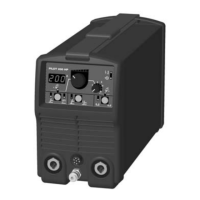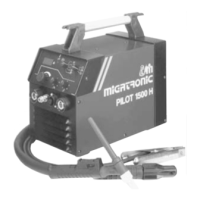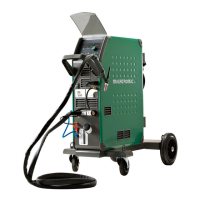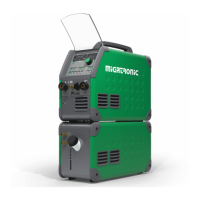20
However, after slope-down the machine does not
switch directly to post-flow but to pilot arc again. It
is now possible to continue with a new welding pro-
cess by a lengthy activation of the torch trigger (>
0.3 seconds), or to extinguish the pilot arc by a brief
activation (< 0.3 seconds) of the torch trigger.
The welding process
for TIG welding
The parameters can be
both selected and ad-
justed during welding
Pre-flow
Pre-flow is the period of time for which gas flows
after the torch switch is pressed and before the HF
arc is established, or until the torch is lifted away
from the workpiece in the LIFTIG process. Variable
0-60 secs.
Start Amp
Immediately after the arc has been
established, the machine regulates the welding cur-
rent to the value stated in the Start Amp parameter.
Start Amp is set as a percentage of the required
welding current and is variable between 0-100% of
the welding current with a minimum value of 5 A.
Slope-up
Once the arc has been established, the wel-
ding process enters a slope-up stage during which
the welding current is increased in linear fashion
from the value stated in the Start Amp parameter to
the required welding current. The duration of this
slope-up time is variable 0-10 secs.
Slope-down
When welding has stopped by activating the
trigger, the machine enters a slope-down stage.
During this stage current is reduced from welding
current to Stop Amp over a period of time called the
slope-down time and variable 0-10 secs.
Stop Amp
The slope-down stage is completed when
the current level has fallen to the value stated in the
Stop Amp parameter. Stop Amp is stated as a per-
centage of the required welding current and is
variable between 0-100% of the welding current
with a minimum value of 5 A.
Post-flow
Post-flow is the period of time for which gas
flows after the arc is extinguished and is variable 3-
20 secs.

